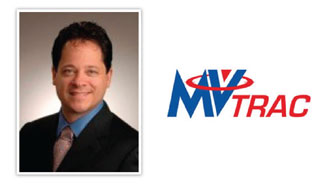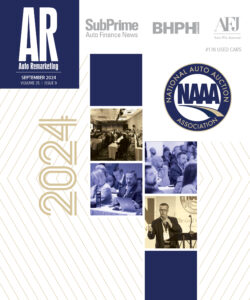A Q&A with MVTRAC’s Scott Jackson on LPR Benefits

Since auto finance and recovery industry professionals still seem to consistently ask a variety of questions about license-plate recognition technology, Auto Remarketing recently did a Q&A with Scott Jackson, founder and chief executive officer of MVTRAC. Jackson’s company is one of the largest LPR providers to the repossession industry.
He considered four questions:
How Does LPR Make Agencies More Efficient?
Let’s cover what I feel is the most important topic to both auto finance and to the recovery industry, and that is the question of how repossession agencies can be more efficient in a climate of declining margins and increasing costs through the use of LPR.
Many don’t realize this, but LPR has evolved very quickly and continues to evolve in increments of days and weeks rather than the traditional months or years usually taken for an industry to transform. Assuming this statement is correct, one must look at the end result of this evolution.
What’s the recovery industry going to look like when the transformation into the LPR technology is completed? In a statement, I’d say field agents will have to drive shorter distances and the radius of operations will be 5 to 10 miles maximum, which would equate to less fuel and higher gross revenue.
Assuming other ancillary costs are controlled, it would equate to higher margins.
Why do I state this? Well, it’s easy really — LPR systems are deployed daily and each system gathers X amount of plates. X depends on the LPR system of course, but let’s use 100,000 plates per month as a bare minimum, per system for argument’s sake.
At 100,000 plates per system per month, it would take 104 systems to scan 10.4 million plates. Extrapolate this same line of thinking to each major metropolitan area and what do you get? In the end, you get a smaller radius of operations with higher numbers of recoveries and lower costs.
Overall, it’s a more efficient operation and a greater ROI for your organization.
Our MVAirTrafficControl program for example, places an icon at the location of every vehicle that’s spotted previously before the date of assignment — both from MVTRAC’s national and the agent’s local hotlist. So if you’ve seen the vehicle 100 times before the date of assignment, you’ll see all the locations where you’ve seen it and be able to determine patterns or locations of the greatest stationary position, which will cut down on the agent’s need to drive around and hunt for the vehicle and will cut down on the need for skip tracing. As we know, these costs are two of the largest affiliated with operating a recovery agency.
How Can LPR Make It Safer for the Recovery Agent?
Many ask how LPR can make repossessions safer, and the thought of making any repossession safe is something I hope for every recovery professional.
I recall all too well those tragedies that happened in voluntary situations, or a debtor coming to get his gun out of personal property in Atlanta, or a debtor visiting a lender in Jacksonville, Fla. All were seemingly peaceful situations in concept. Thus in concept, LPR would theoretically make repossessions safer for those debtors that believe no one knows where they are located and the LPR system hits on them.
After all, if the debtor feels safe, the individual isn’t as poised for trouble and confrontation, right?
Of course, if the recovery agent is confronted during the repossession, the factors are that of a traditional repossession. The efficiencies of a good LPR system equates to fewer hours worked and fewer tired drivers, which does equate to fewer dangerous drivers.
I myself lost a driver years ago to him falling asleep at the wheel and rolling his vehicle, and that particular driver had a full eight hours of sleep. I can’t imagine the number. How many recovery agents are driving around trying to find that next vehicle that will put food on their table or gas in their tank? I’m sure it’s modestly more than 50 percent of the entire industry.
Yet another reality is the LPR systems are in more cities today than ever before. And although some would prefer no one know about it, many are keen to seeing them and debtors have become more complacent about keeping their cars.
In other words, why fight to keep a car when they’re just going to recover it when I’m at the gas station or the grocery store tomorrow?
What Feedback Has the Auto Finance Community Given to Technology Providers about LPR?
The auto finance community deals with statistics, raw data and raw facts. The data that leads to facts leads to forecasting and forecasting leads to the creation of systems that will best utilize the data.
LPR has had such a significant impact on recovery dollars for a long enough period of time; it has given the auto finance community the ability to forecast the expected recoveries for the foreseeable future. It has allowed for a baseline they can use.
Where it will grow is an unknown to the lender, but I’m sure they’ve been able to do the math and figure out a forecasted growth. Many lenders simply ask us for our input on this, and we share with them our growth model of systems deployed and what it equates to in terms of recovery dollars.
The profound impact, however, has led most of the auto finance community to stipulate LPR is revolutionizing the recovery industry. And if you don’t have it, you will be positioning yourself out of the marketplace.
What Guidance Is Out There to Overcome an Agency’s Apprehension about Making the Substantial Investment in LPR Technology?
LPR companies have users and the users are readily available by either calling the LPR company and asking for references or checking the online blogs such as TheAmericanRepossessor.com, Repoman.com, Recoveryindustry.com or CUCollector.com.
As with any blogging sites, some are apprehensive about posting questions or entering into dialogue with some folks that enter these sites, and I’m certainly understanding of that fact. The sites do allow for the gathering of real information, however, so why not get some real opinions?
MVTRAC has a Recovery Industry Advisory Board and plenty of subscribers who will tell you what they’ve learned to make them work most effectively.
I can’t speak to the other LPR providers, but I have seen some communications of advisory board members for their organizations, so I’d bet they would provide references and board members as well.
Regardless of where you were or are in your thinking on LPR in the recovery industry, it is here to stay and it has gained tremendous momentum so the longer you wait, the further behind you’ll be in both investment spending to gather historical data and learning how to best use the ALPR system of your choice.
You should look it LPR as an investment, because the returns are high if you focus your efforts properly and look at it as any other investment you would make.

 View The Latest Edition
View The Latest Edition

